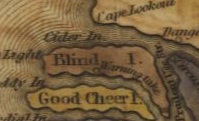While it seems pretty clear most American households in the eighteenth century had access to cider, it’s less clear how many had access to cider-making equipment.
One study of probate inventories (a listing of personal possessions taken at someone’s death) from mid-century Kent County, Delaware does quantify how many were around. [1] The author surveyed 121 probates and broke them down into three categories: those worth £50 or less, those worth £50 to £225, and those worth more than £225.
The chart below shows the percentage of various items within each bracket. Cider mills are second from the bottom and highlighted in red. By the way, you’ll notice that presses aren’t listed. For the moment, the assumption is that if a mill is present, so was a press.
What do these numbers look like in real presses? Well, 6% of 48 probates equals 3 and 30% of 24 comes out to about 7. Which means only ten of the 121 probates, or 8%, include a cider mill.
That so few are present speaks to the expense of cider-making equipment (which is why only wealthier households had them) and the fact that a few could serve an entire community.
It should be said that probate inventories are a wonderful source for researching household items, but they are far from complete.[2] They often leave out cheaper and commonplace items. However, it’s probably safe to assume that cider mills are always listed because they aren’t either of those things.
************************
1. John Bedell. “Archaeology and Probate Inventories in the Study of Eighteenth-Century Life.” in Journal of Interdisciplinary History, XXX1:2 (Autumn, 2000), 223-245.
2. Also not everyone’s possessions were probated, so some cider-making equipment might be lost to history.












